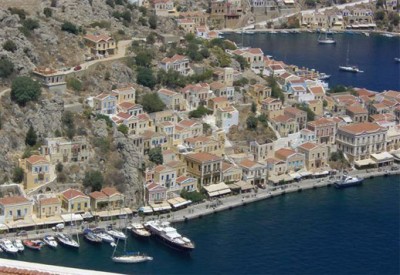Cities today use ‘prescriptive’ codes, but what came before that?

All cities have planning codes which predetermine street widths, building heights and volumes, parking ratios, etc. These are known as prescriptive codes, of or relating to the enforcement of a rule. However, those are merely the means to the end, and historians have long been trying to decipher how the most elegant cities (in Greece, Tunisia, Spain…) came to be via such prescriptive codes. Well, the answer, as outlined in the article, Decoding paradise – the emergent form of Mediterranean towns, is that they didn’t.
“Modern and post-modern architects attempted in vain to imitate traditional building using their own, lazy information technologies, and succeeded only in building pastiche of complexity. The breakthroughs in complexity theory of the past decades finally gave us the opportunity to decode the mysteries of historic building cultures by showing us what kind of information to search for. What was right in front our noses suddenly becomes deeply meaningful.”
The answer is proscriptive codes.
While a prescription is “a rule that defines in detail what to do in a given situation”, a proscription is “a template for defining prescriptive rules, a pattern for a rule“. Use of the word ‘proscription’ is intriguing, in that its dictionary definition means ‘preventing’, yet its prefix is ‘pro’, which means ‘for’, followed by ‘script’ – ‘write’. So it’s actually become a bit tainted over time, and perhaps so have our codes and cities.
Ok, so what’s the purpose of a proscriptive code? It was created to “treat the town as a living, whole structure in movement that must be preserved while it achieves equilibrium with a changing environment and society.“
In the next entry, some examples of proscriptive codes…
Image of Symi, Greece by Bevilacqua Giampiero.
